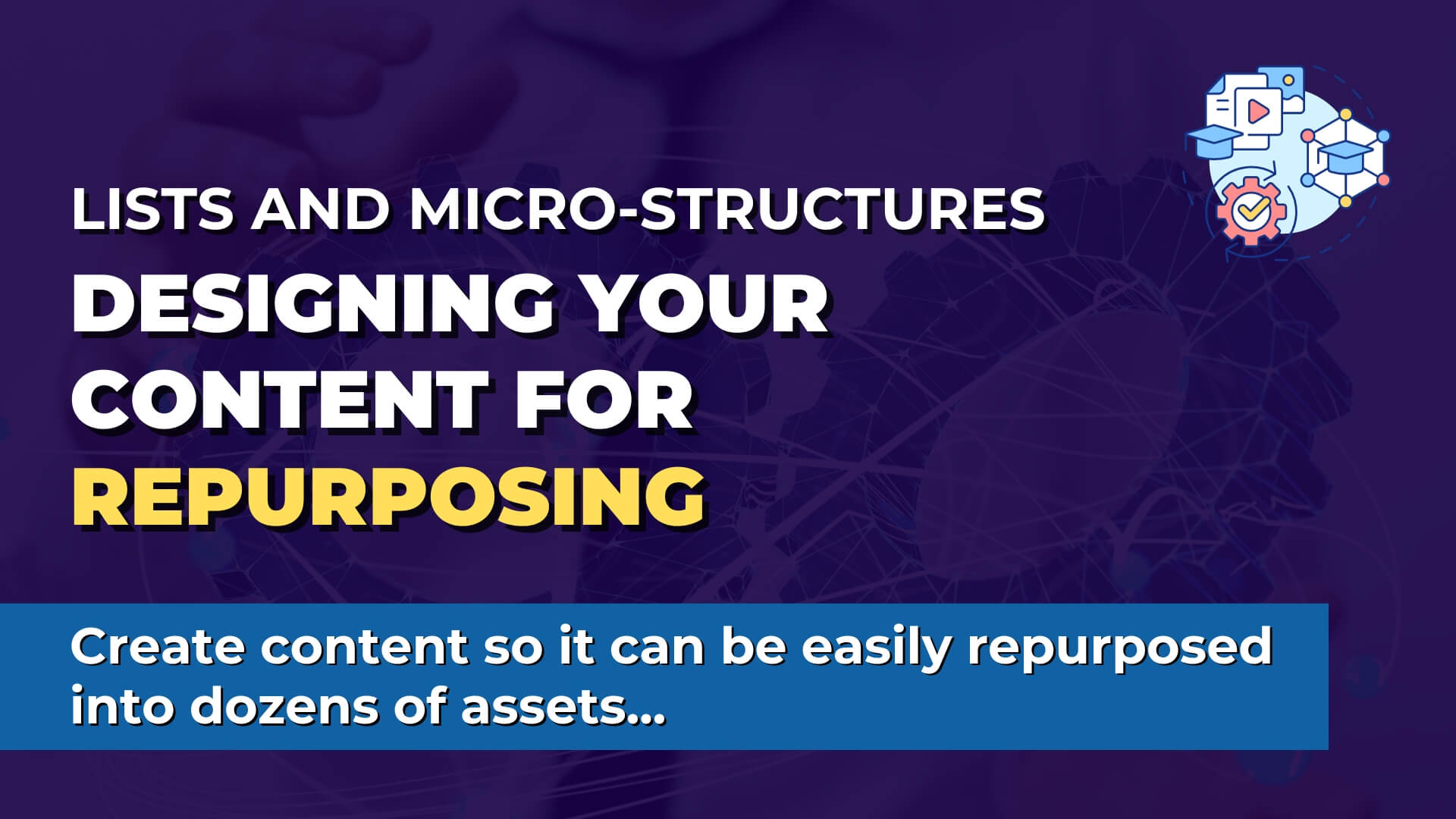Designing your content for repurposing: Lists and micro-structures
In this issue I’ll show you how create content so it can be easily repurposed into dozens of assets.
As a creator or solopreneur (or really any business owner) every hour of your time is a precious resource.
Most creators spend their few precious hours a week creating a monolithic piece of content that only gets published to one channel, one time.
With the right strategy, one piece of content can be turned into 20 – 30 assets.
David Ziembicki, Expert Business Agency
How? Lists and “micro-structure”
Everything is a list
Once you pick a topic for your long-form content and determine what your main points are, organize them into a list.
Your list can range from 3 to 10 or more elements.
This does NOT mean all your content needs to be “7 tips for XYZ” or anything like that.
A 3-part framework, a 7-step process, are good.
Even a story format can be a list (the back story, the call to adventure, the struggle, the redemption, etc.)
Your long-form content will be the full list and all of the content.
Your short-form content will be each item in the list.
But will those short form segments make sense on their own?
Only if you apply a micro-structure to each of them.
Use micro-structures in your content
Micro-structures are a format within a format.
If you remember back to high-school essay writing, there are structures like the classic “tell them what you’re going to tell them, tell them, then tell them what you told them”
Then there are paragraph structures like intro, content, summary that leads to the next paragraph.
Or Russel Brunson’s Hook / Story / Call to Action approach.
The main idea is that each key point or element of your content topic can stand on its own because it has it’s own hook/intro, content, and call to action.
Create your your long-form content from the bottom up
With your short form pieces created using micro-structures, your long-form content piece then is the compilation of all of them.
If needed, you can add a hook and introduction at the beginning that ties them all together and a summary or call to action at the end.
At this point, you have a solid long-form piece of content and 3 – 10 short form pieces of content.
The micro-structure ensures that each short-form piece from the long-form can stand on its own and not feel like it’s a random passage ripped from the original.
Use multiple formats to amplify your content further
Each piece of content, long and short-form, can be recorded as video, then turned into audio and text versions.
This multiplies your initial pieces of content (one long form and 3 – 10 short form) into 9 – 30 pieces of content.
Beyond that, there are other formats like threads, carousels, quotes, etc.
The final step is publishing all of these across multiple social networks.
One topic and piece of content is now dozens of assets and hundreds of posts.
Contrast this approach (lists and micro-structures) versus one long story or narrative where it would be much more difficult to break into segments that stand alone.
Get the most out of your content creation efforts
Given the same amount of time, using this approach delivers more content and potential for organic traffic.
Take a look back at this issue. It will be turned into a video, podcast, and blog. Each heading and section is a piece of content that can stand on its own and will become a Reel, TikTok, and YouTube Short.
It will also become a carousel post on LinkedIn and a Twitter thread. Interesting quotes will be pulled and posted.
Take Action
- Start creating your content using lists and micro-structures
- Start with video then extract audio, text, and highlights
- Turn those into different formats like Reels/TikTok, Carousels, Threads, and Quotes
- Document and systemize so you can delegate

David Ziembicki
David Ziembicki is the founder and CEO of the Expert Business Agency, which helps coaches, course, and membership creators build their online businesses. David has been an industry-leading technology and business consultant for over 25 years having worked at Microsoft, Deloitte, SAIC, and Avanade.

